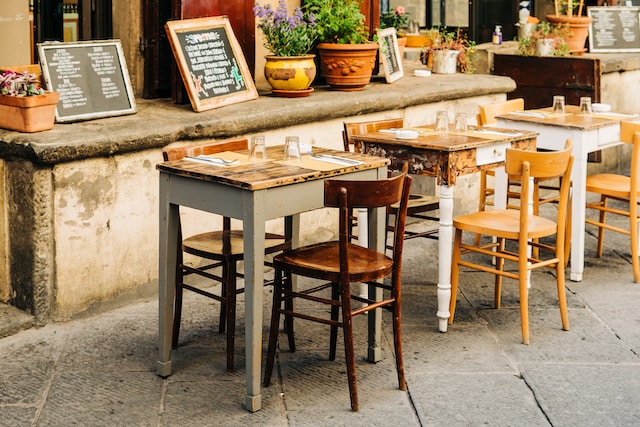Frustrated fans of good food living outside of Italy may have rejoiced at the recent news that the Italian agriculture minister (the ‘Minister for agriculture and food sovereignty’, to be exact) has proposed the creation of an official ranking system for Italian restaurants abroad.
The minister said he’d had enough of “chefs who can’t cook Italian” and of supposedly Italian restaurants which have “nothing to do with Italy” – a feeling many people can likely identify with after coming across one too many disappointing versions of their favourite Italian dish.
READ ALSO: How Italy’s government wants to rank Italian restaurants abroad
As any of the estimated five million Italian citizens living outside of the country would probably agree, sourcing quality raw ingredients with which to recreate nonna’s recipes, never mind finding acceptable restaurant versions of classic dishes, is generally a challenge.
And though big, cosmopolitan cities have no shortage of credible-sounding Italian restaurants, it can take a lot of effort (and expense) to find out which are the real deal.
Luckily for lovers of Italian food around the world, the ratings system proposed by the agriculture minister already exists. And there are a few other things you could try if you’re craving well-executed Italian classics, but can’t make it back to Italy just yet.
Here are a few suggestions that we hope will take you one step closer to the authentic cacio e pepe of your dreams:
ITA0039 100% Italian Taste Certification
This certification scheme seems to be exactly what the minister is looking for: created by Italy’s main agricultural association Coldiretti with the Asacert certification body and national food safety and education authorities, it aims to help consumers abroad identify and appreciate quality Italian ingredients.
It has so far been used mainly to certify that products sold abroad and labelled as Italian were in fact made in Italy – but has also now begun to certify international restaurants which use authentic ingredients and meet other quality standards.
READ ALSO: Why do Italians get so angry if you mess with classic recipes?
The certificate has only been applied to a few dozen restaurants around the world so far, including pizzerias in Malta and France, a restaurant in Suzhou, China, and a small chain of restaurants in UK cities including London and Manchester. However the website states that it’s planning to add many more to the list – which you can see here.
Restaurants have to apply for the certification themselves, which may be one barrier to more small businesses signing up – though the scheme’s creators say it’s a valuable marketing tool for Italian restaurants abroad who want to set themselves apart.
Meanwhile, Italy’s Chamber of Commerce has also reportedly been working on the creation of another, similar certification scheme jointly with the National Tourist Research Institute.
Gambero Rosso
Many visitors to Italy look to the Michelin guide for restaurant recommendations, but when searching for truly Italian restaurants abroad you may want to turn instead to the listings compiled by prominent Italian food and wine magazine Gambero Rosso.
Within Italy, the Gambero Rosso Top Italian Restaurants guide is considered a significant influence on the country’s culinary scene. The international version of the guide is similarly well-regarded, and highlights the work of some of the top-rated Italian chefs around the world at restaurants everywhere from Stockholm to Los Angeles.
As well as fine dining, the list features pizzerias, wine bars, bistros and other venues, many of which put a creative twist on traditional cuisine. You can search the guide by city in Italy and worldwide here.
Word of mouth
Perhaps one reason there aren’t more online resources signposting authentic Italian restaurants abroad is that Italians themselves simply don’t tend to rely on them.
As you might have discovered, in Italy the best (or only) way to get reliable information is usually to go somewhere and ask in person – attempts to phone or search online are often a path to frustraton, or just a waste of time. And as far as Italians are concerned, personal recommendations from family and friends are the only ones to be trusted.
READ ALSO: Four myths about ‘traditional’ Italian food you can stop believing
The same rule appears to apply abroad: Italians who move to other countries usually develop a network of close Italian contacts in their chosen city who they’ll ask for recommendations for just about everything.
So if you want to know where the good Italian food is in your area, the best way to find it might be to follow their lead and, well, ask an Italian.
It’s obviously much harder for non-Italians who don’t have the contacts, but if you have an Italian acquaintance, colleague, or coffee shop barista, it’s worth asking for some tips – you’ll probably find they’re more than happy to talk to you about Italian food.
Do you have any other tips for finding authentic Italian restaurants outside of Italy? Please share them with us in the comments below.




 Please whitelist us to continue reading.
Please whitelist us to continue reading.
Member comments